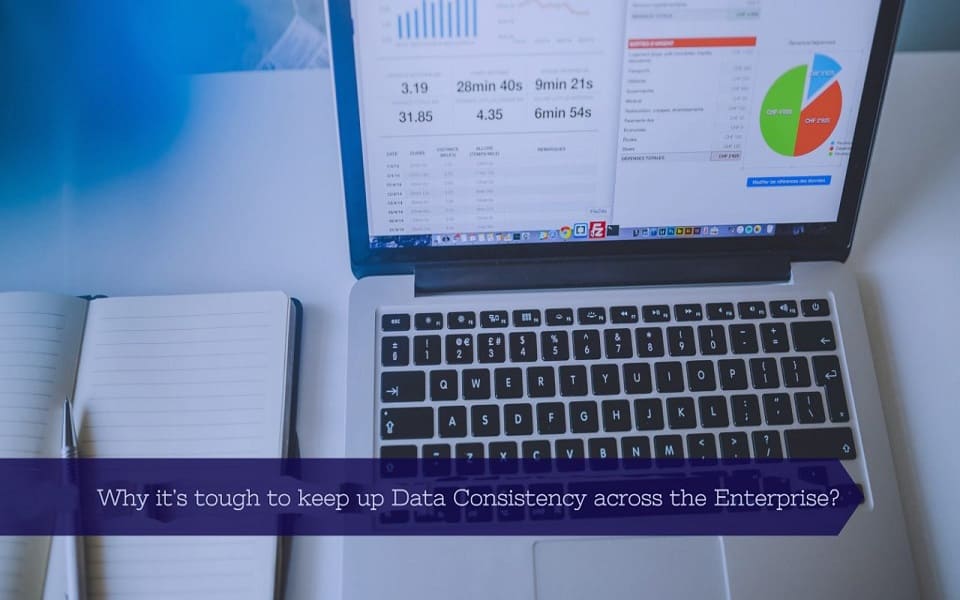Subscribe to Our Newsletter
Stay updated with the latest tips and strategies. Get additional discounts and alerts on offers.

Data consistency….the much-talked about topic in today’s business world. It is what should be there by default…but is still a dream. Well, this trouble regarding data has been there from the inception of ways of businesses. It’s true that we have come a long way from the traditional models. Artificial intelligence, marketing automation, account based marketing & many more… are now being used to make business processes more & more simpler. But still, we are troubled in regards with Data Consistency.
Any typical enterprise of today’s world is overwhelmed with data. The volume of relevant data is increasing day by day from laboratory notebooks to news reports, from structured databases to domain-specific lexicons & scientific literature to technical reports. Majority of these data sets will be uncategorized & lost in silos. This turns them into inaccessible data. This is because when marketers try to access them, it turns out to be hard to find specific data sets as they are not indexed. But if marketers take up the risk of Data Consistency, the far greater untapped business value can be accessed.

The primary reason that Data Consistency is not truly practical is that everyone needs their own view of the data.
Let’s imagine an office scenario. Consider that a certain monthly report has to be prepared for total sales. The report will be viewed indifferently by each department of the organization. Sales dept. will be referring to all the business contracts they have closed in the committed time period. But on the other hand, the group controller’s viewpoint will be on the closed businesses booked to the ledger. By the time it reaches the CEO, what he or she understands from it might be totally different from what he wants.
This dangerous effect of alternate views which causes conflicts between operational decisions & strategic corporate goals is because organizations are not practicing Data Consistency.

The world of data management comes with a handful of terms that are often used interchangeably. This often leads to confusion between the ones who handle the data processes. This is why it’s important to differentiate exactly which executive handles what as a part of the overall strategy to keep the flow of information smooth throughout the organization. Let’s check out the terms that you guys should be aware of to avoid failures that can chaos across the organization.
Data Governance
It is nothing but a risk control process, which is damn important. It is necessary to manage control over data availability, usability, integrity, & security of any enterprise. Successful Data Governance requires a governing body which has defined sets of mandates, goals, & processes, a dedicated plan to execute the procedures & people and technology that can automate & enforce the processes. All this makes a crucial part of Data Consistency.
Change Management
It is a well-defined process that’s used to formulate data changes consistently across an organization in an orderly fashion. Engineered to ensure the integrity of data across the enterprise, change management is a vital part of Data Consistency process. The executives who do this understand exactly when, how, and if changes to the data are appropriate enough.
Master data Management
Master data management is what refers to the control & support of certain specific data that has been categorized as organizational. This will include data that is shared across departments, such as customer contact details, vendor ids, employee ids & so on. Master data management is an important part of Data Consistency because it separate duplicates, standardize data & integrate business rules that are crafted to reduce the amount of incorrect data entering core enterprise systems.
The world of business is changing by the minute. Artificial intelligence, marketing automation, account based marketing are all upgrading the ways of how things were done earlier. As mentioned above, Data management is also undergoing transitions. Knowing these terms & what it does will aid you guys in applying the principles of Data consistency in your organization.
It’s easy to get confused people when they are working around the clock on processes that sound & almost feel similar. The words Consistency & Integrity are orthogonal. But you can see that consistency is often achieved through certain constraints of integrity.
Data integrity refers to overall accuracy, completeness, and consistency of data that can be indicated by the absence of alteration between two updates of a data record, meaning data is intact & unchanged. Data consistency is what ensures to have correct format & layout of data. When data is consistent, there is no corruption in it.
Ready to reach CEOs to discuss regarding your business?
Start by attaining leads from DataCaptive

Accurate data is the key to today’s world of business. Inconsistent data will pull your organization down. Organizations have begun to understand this fact & over the years the weight & value placed on information is growing. If you are still lagging behind, understand that you cannot afford to underestimate the importance of up-to-date information.
Also read on: COOL THINGS B2B MARKETERS CAN LEARN FROM B2C TO WIN THE MARKET & AWESOME GUIDE TO B2B DATA NORMALIZATION
Show Some Love!

Subscribe to Our Newsletter
Stay updated with the latest tips and strategies. Get additional discounts and alerts on offers.
Related Articles
Subscribe to Newsletter
Stay up to date with the latest marketing, sales, and service tips and news.
